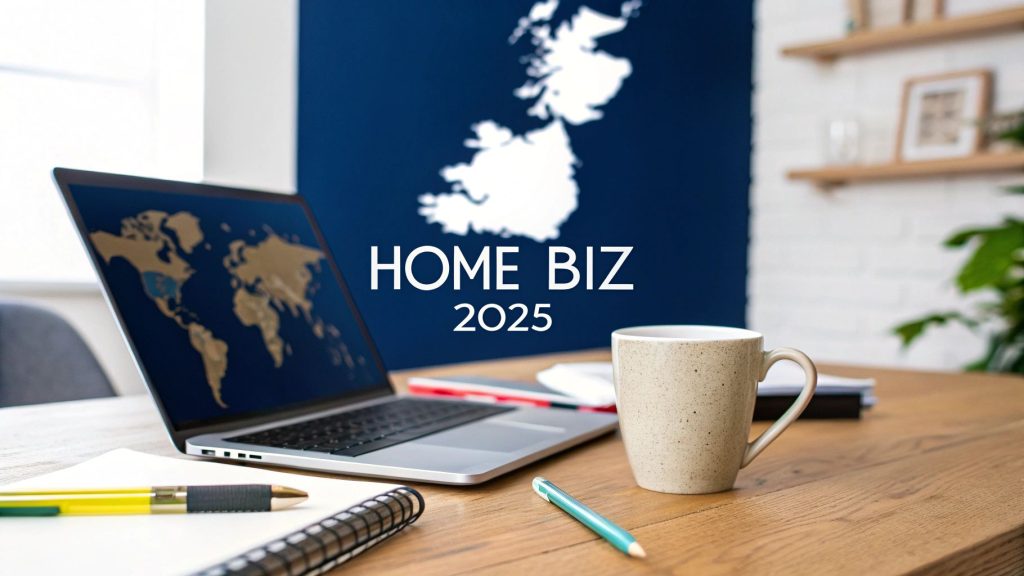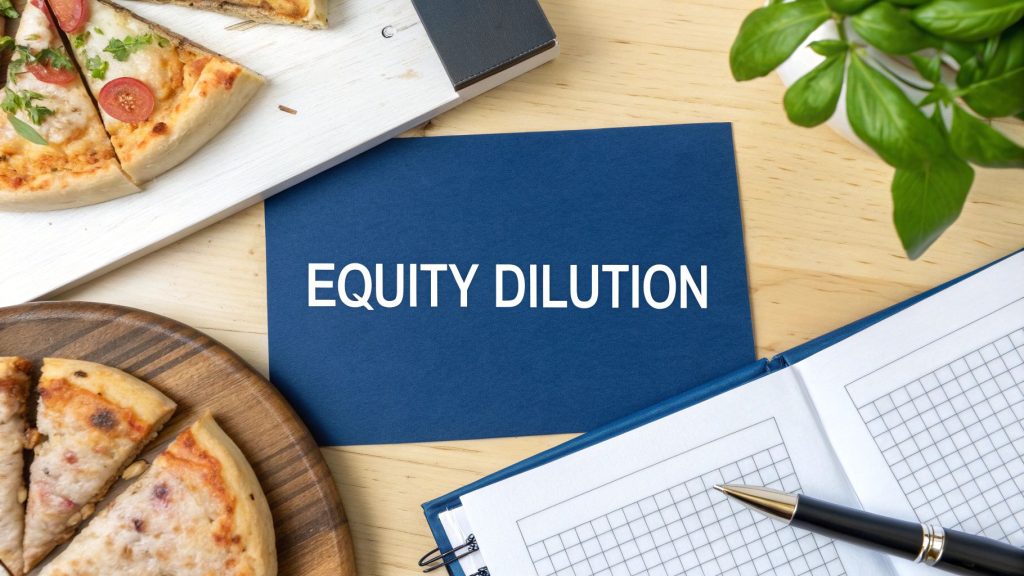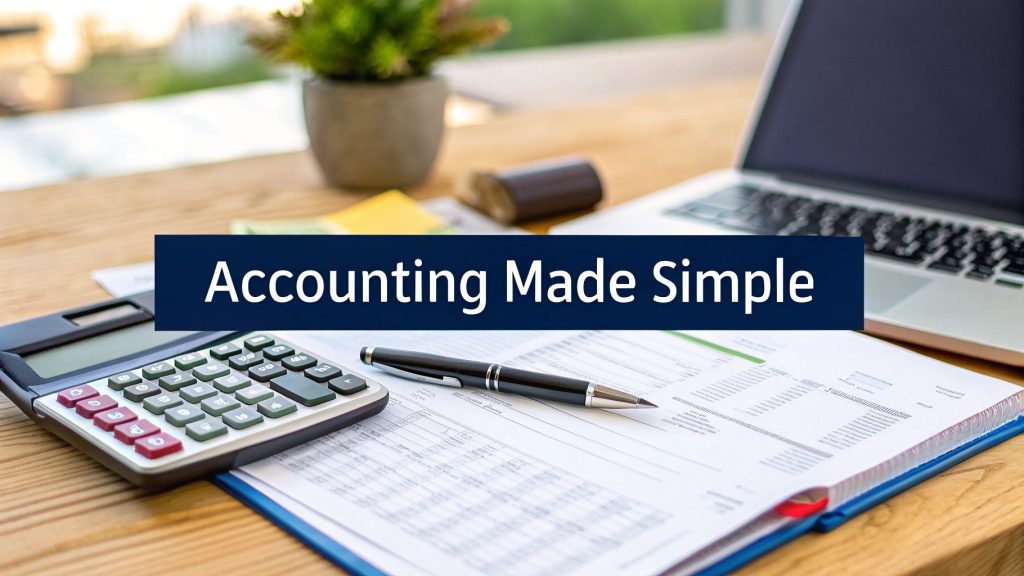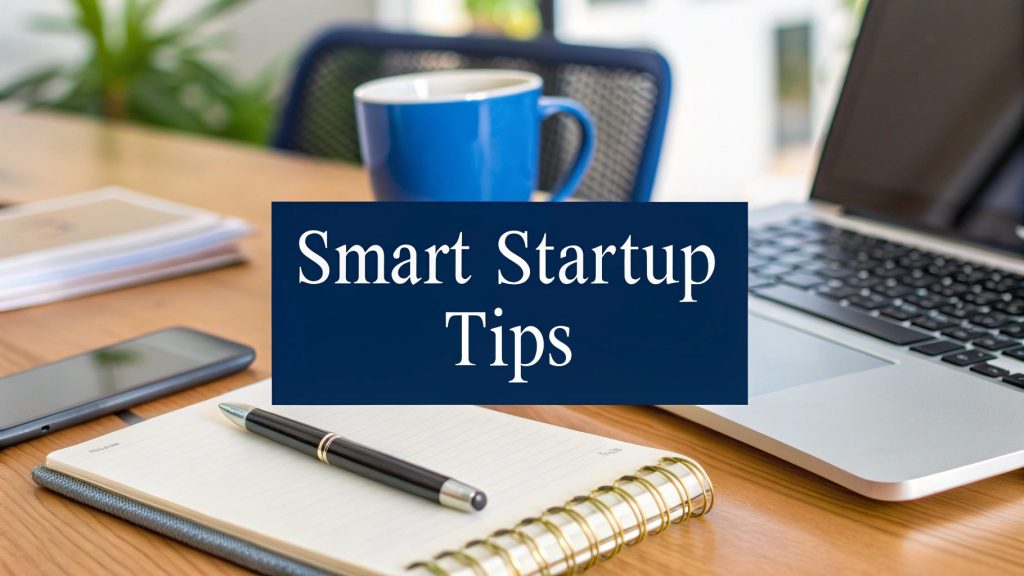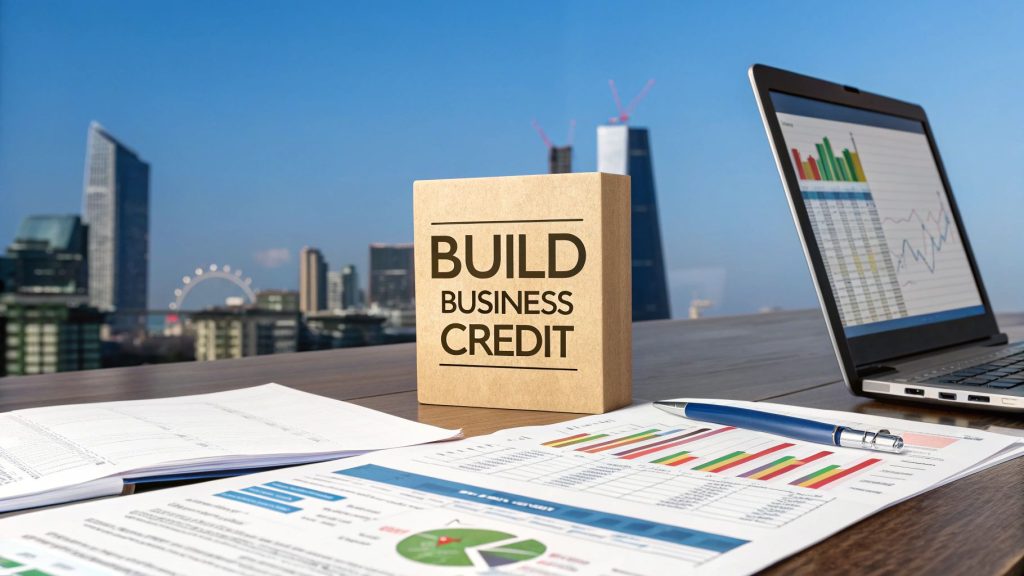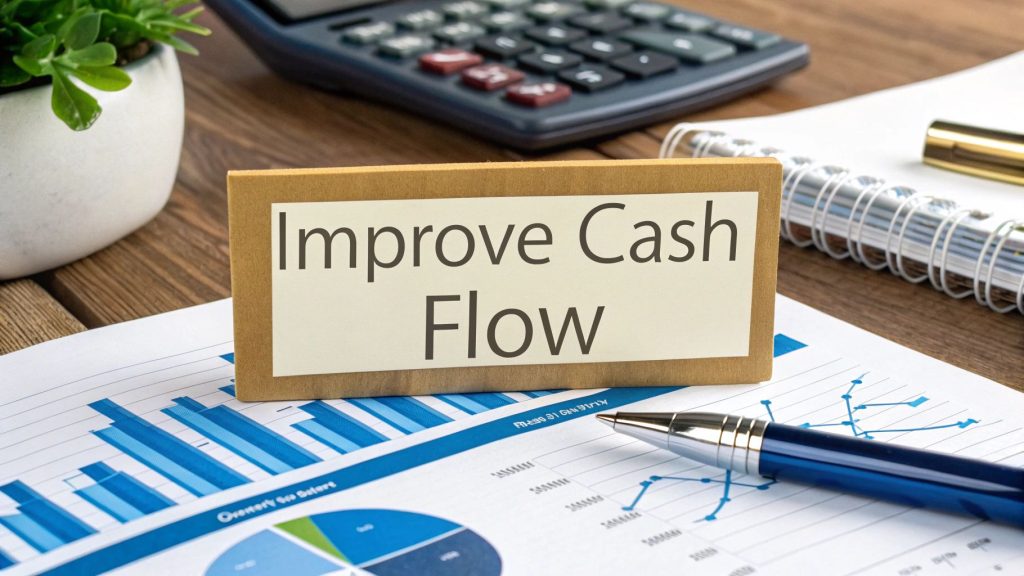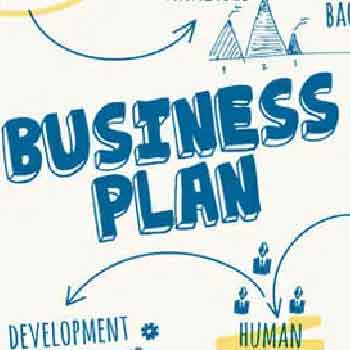How to Write a Business Proposal That Wins Clients
How to Write a Business Proposal That Wins Clients – Writing a business proposal that wins clients really boils down to three things: deeply understanding their needs, clearly presenting your solution, and proving you’re the best choice to make it happen. A great proposal isn’t just a sales document; it’s a strategic plan that speaks directly to the client’s biggest problems.
Laying the Groundwork Before You Write

Before a single word hits the page, the best proposals are won through smart preparation. This foundational work is what turns a generic, forgettable template into a custom-fit solution that grabs their attention. Your goal is to get past the surface-level request and uncover the real “why” behind what they need.
Think of it this way. A marketing agency gets an enquiry from a local retailer asking for “social media management.” A lazy proposal would just list some services and prices. A winning proposal, however, comes from digging deeper.
After a bit of research, the agency realises the client’s unspoken fear is being swallowed up by new online competitors. This insight changes everything. Suddenly, the proposal isn’t about posting on Facebook; it’s about safeguarding their market share and driving real footfall to their physical shop. This strategic shift transforms your pitch from a simple service offering into a vital business solution.
Understanding the Client and Their Market
Your first job is to become an expert on your client’s business and the world they operate in. This goes way beyond a quick scan of their website. You need to get under the skin of their challenges, their goals, and the industry pressures they face every day.
- Identify Pain Points: What are their biggest operational headaches or strategic threats? Is it clunky internal processes, falling sales, or a competitor who seems to be one step ahead?
- Clarify Objectives: What does success actually look like for them? Are they chasing revenue growth, better brand recognition, or just making their day-to-day operations smoother?
- Analyse Competitors: Who are their main rivals, and what are those rivals doing well? A solid grasp of their competitive landscape is non-negotiable, which is why it’s essential to learn how to conduct a competitor analysis before you start writing.
The most persuasive proposals don’t sell services; they solve problems. When you show a deep understanding of the client’s world, you build instant trust and position yourself as a partner, not just another supplier.
All this prep work is especially vital in today’s competitive economy. The UK’s small and medium-sized enterprise (SME) sector, which makes up over 99% of all UK businesses, relies on high-quality proposals to grow. In crowded markets like London, where there are 1,367 SMEs per 10,000 adults, a well-researched proposal is the only way to stand out and secure that crucial contract or investment.
Your Pre-Proposal Intelligence Checklist
Before you outline a single section, use this checklist to gather the critical intelligence needed to build a winning proposal. This isn’t just about ticking boxes; it’s about building a strategic foundation.
| Intelligence Point | Why It Matters | Question to Uncover It |
|---|---|---|
| The Core Problem | Moves your pitch from “what we do” to “how we solve your specific issue.” | “Beyond the project brief, what’s the single biggest challenge you’re hoping this will solve for the business?” |
| Key Decision-Makers | Helps you tailor the language and focus to appeal to the right people. | “Who will be reviewing this proposal, and what is most important to each of them?” |
| Measures of Success | Shows you’re results-focused and aligns your solution with their goals. | “Fast forward six months. What would need to have happened for you to consider this project a massive success?” |
| Budget Expectations | Avoids mismatched expectations and shows you respect their financial reality. | “To ensure we propose a realistic solution, do you have a budget range in mind for this project?” |
| Previous Attempts | Helps you understand what hasn’t worked so you can position your approach as better. | “Have you tried to solve this problem before? What were the results, and what did you learn?” |
| Competitive Landscape | Allows you to differentiate your solution from what rivals might offer. | “Who do you see as your main competitors, and what do you admire or worry about regarding their approach?” |
| Timeline & Urgency | Lets you frame the proposal around their schedule and highlights the cost of delay. | “What’s the ideal start date for this project, and are there any critical deadlines we need to be aware of?” |
Gathering this information isn’t an interrogation; it’s a conversation. The insights you gain here are the raw materials for a proposal that feels like it was written just for them—because, with this level of prep, it was.
Crafting the Core of Your Proposal
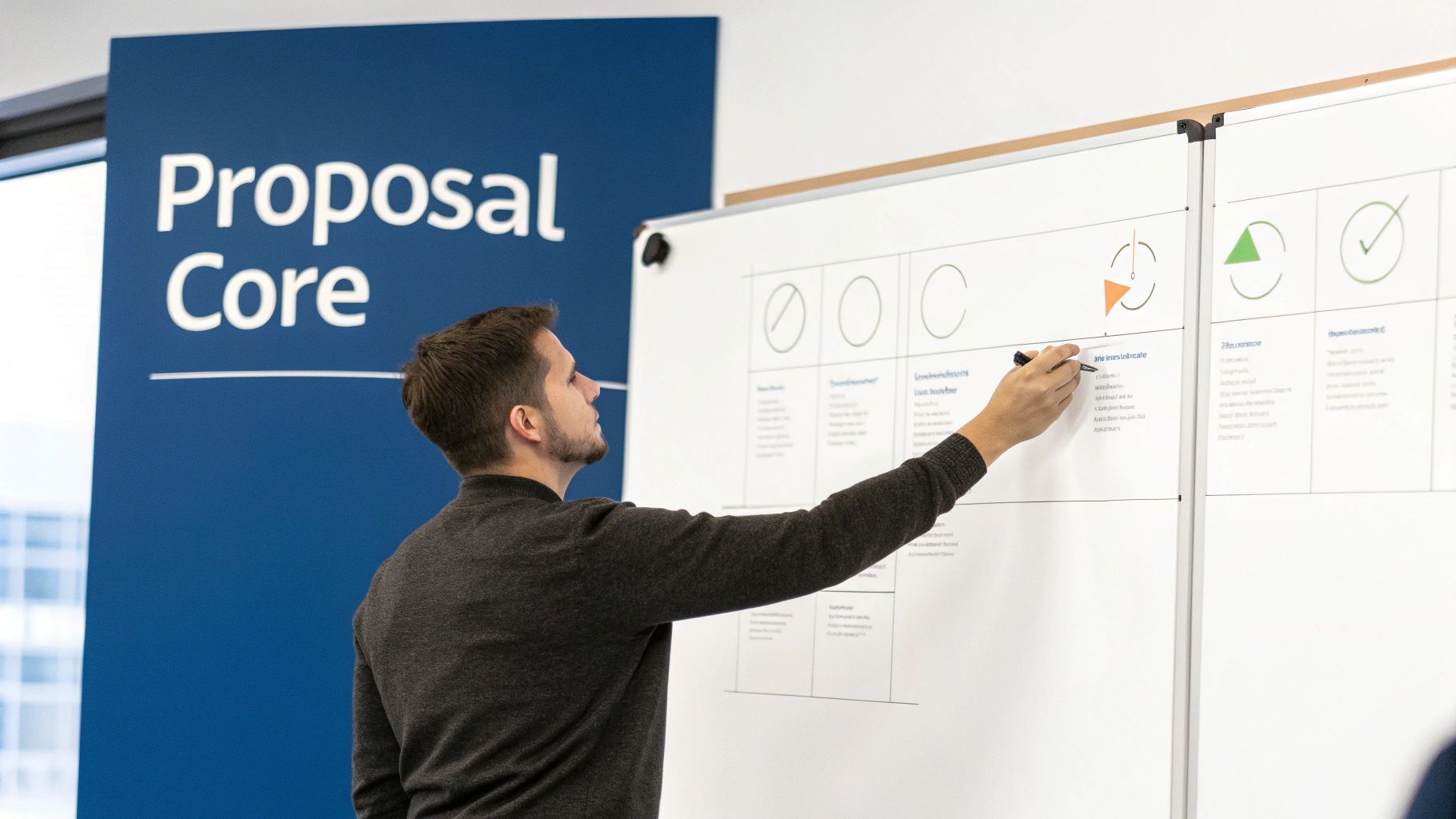
With your research and outline sorted, it’s time to get into the real meat of the proposal. This is where you build the argument that convinces your client you’re the right choice. These sections aren’t just about filling a template; they need to tell a compelling story, guiding the reader logically from their problem straight to your solution.
The first, and arguably most important, part is the executive summary. Don’t think of this as just a fluffy introduction. It’s your entire proposal distilled into a powerful, bite-sized snapshot. Busy decision-makers often read this part and nothing else, so it has to grab them from the very first sentence.
It needs to nail three things: the client’s main problem, a hint at your brilliant solution, and the key benefits they’ll see. You can get a great feel for this by looking at some practical business plan executive summary examples to see how experts condense big ideas into a compelling pitch.
Defining the Problem and Presenting Your Solution
Once you’ve hooked them with the summary, you need to prove you truly get their situation. This is where all that groundwork pays off. Lay out the client’s problem clearly—not in your jargon, but in their words. Use the language and specific challenges they shared with you to show you were actually listening.
For example, a software company pitching a new CRM system wouldn’t just say, “Your sales process is inefficient.” That’s lazy. A much better approach is to frame it with empathy and data:
We understand your sales team currently spends over 10 hours per week manually updating spreadsheets and tracking leads. This is leading to missed follow-ups, inaccurate forecasting, and is directly hitting your ability to close deals and grow revenue.
This shows you’ve done your homework and validates their frustration. It sets the stage perfectly for you to introduce your solution, not as a boring list of features, but as the direct answer to the pain points you just described.
By connecting every part of your service back to a specific problem, you create a powerful “before and after” story that’s hard to ignore.
Outlining Scope and Deliverables
Clarity is everything when it comes to what you’ll actually do. The scope and deliverables section is your chance to get rid of any grey areas and manage expectations right from the start. Don’t be vague; be painfully specific about what’s included and, just as crucially, what isn’t.
- Deliverables: These are the tangible things the client gets. For our CRM example, this could be a fully configured software platform, a complete data migration report, and two half-day team training sessions.
- Scope: This sets the project boundaries. It might specify that the project includes up to 20 user licences and integration with their existing email client, but excludes custom API development.
Being this clear prevents “scope creep” later on and gives the client confidence that you have a solid, well-thought-out plan.
Finally, lay out a realistic timeline. A simple table or a visual roadmap works wonders here. Break the project down into phases with clear milestones and estimated completion dates. It shows you’ve thought through the logistics and respect their time, which goes a long way in building the trust you need to get that signature.
Presenting Your Pricing and Proving ROI

Here we are. The moment of truth in your business proposal. This is where you connect your solution directly to the client’s bottom line, and your goal is much bigger than just listing prices. It’s about reframing your fees as a smart, calculated investment with a clear, tangible return.
Whatever you do, don’t just drop a single, intimidating number on them. That’s a fast track to getting a ‘no’.
Instead, lay out your pricing in a way that gives the client control and clarity. Offering tiered packages—think Basic, Standard, and Premium—or breaking down the costs by project phase helps them see exactly what they’re paying for. This simple shift turns the conversation from, “Can we afford this?” to, “Which of these options makes the most sense for us?”
Choosing the Right Pricing Model
How you structure your fees says a lot about your approach and understanding of the project. Picking the right model shows you get the client’s need for financial predictability. It’s a subtle but powerful way to build confidence right from the start.
There are three common models you’ll come across:
- Project-Based: A single, fixed fee for the entire project. This works brilliantly for projects with a clearly defined scope and deliverables, giving the client total cost certainty.
- Hourly Rate: You bill for the actual time spent on the work. This model is best suited for projects where the scope is flexible or likely to evolve.
- Retainer: A recurring monthly fee for ongoing services. It’s perfect for long-term partnerships like marketing support or IT maintenance, ensuring you’re available when they need you.
Imagine a construction firm pitching to build an eco-friendly office extension. A project-based fee makes perfect sense. They can bundle materials, labour, and even the long-term value (like projected energy savings) into one clear investment figure. The ROI is baked right into the price.
Building a Powerful Business Case
Once you’ve laid out the costs, you have to prove the value. This is where you build a compelling business case that screams “return on investment” (ROI). Forget complex financial spreadsheets; simple, convincing projections are far more effective.
The most powerful proposals don’t just state a price—they justify it by showing the client what they stand to gain. Frame your fee not as a cost, but as an investment that will generate more revenue, save money, or reduce risk.
Focus on the key performance indicators (KPIs) that actually matter to your client. Will your solution boost their sales conversion rate by 15%? Will it slash their operational costs by £5,000 a month? Put these numbers front and centre. A solid grasp of small business accounting basics can be a huge help here, allowing you to frame these financial benefits convincingly.
This level of financial justification is especially critical when you’re pitching to certain sectors. Take the professional, scientific, and technical industry—the UK’s largest sector for registered businesses at 15.3%. They live and breathe data and demand rigorous ROI calculations. As UK businesses adopt more complex corporate structures, proposals must contain solid financial frameworks to get stakeholder buy-in. By proving your worth in pounds and pence, you make their decision to say “yes” both easy and logical.
Building Unshakeable Trust and Credibility

Let’s be honest. A brilliant solution and a fair price mean nothing if the client doesn’t trust you to actually deliver on your promises. This is the part of your proposal where you build that confidence and prove you’re not just a good choice, but the only choice.
It’s where you shift the focus from the “what” and the “how” to the “who.” Your company’s story, mission, and values aren’t just corporate fluff; they are powerful tools for building a real connection. Don’t just list them. Weave them into a narrative that shows why you get out of bed in the morning. This human touch is often the one thing that separates you from everyone else.
Showcase Your Team and Prove Your Expertise
The people behind your brand are your single greatest asset. Highlighting their specific skills and experience gives your client tangible proof that you have the firepower to get the job done. Don’t just throw in names and titles—make a direct link between their expertise and the client’s project.
Imagine you’re a new consulting firm just starting out. You might not have a long company history, but you can build credibility instantly. The trick is to include short, impactful bios for the key people who will be working on the project.
For example:
- Jane Doe, Lead Strategist: “Jane spent 10 years at a leading FTSE 100 company, where she successfully managed three major digital transformation projects, each resulting in an average efficiency gain of 25%.”
- John Smith, Technical Lead: “John is a certified data analyst with extensive experience in the client’s specific industry, having previously developed a custom analytics platform for their top competitor.”
This simple approach grounds your claims in real-world results, reassuring the client that they will be in very experienced hands.
A proposal isn’t just selling a service; it’s selling the expertise and reliability of the people who will deliver it. Make sure your team’s qualifications shine through.
Leverage Social Proof with Case Studies and Testimonials
Nothing speaks louder than past success. Case studies and client testimonials are your hard evidence. But here’s the catch: random examples won’t do. The magic word is relevance. You need to pick stories that mirror your prospect’s industry, size, and the specific challenges keeping them up at night.
When you’re putting together a case study, keep it simple and powerful. I always follow a straightforward structure:
- The Challenge: Briefly explain the problem a previous client was up against.
- Our Solution: Detail the exact strategy your team put in place.
- The Result: Hit them with hard numbers. “This led to a 40% increase in qualified leads within six months.”
This format tells a clear story of transformation and proves you deliver measurable results. By showing you’ve already solved similar problems for others, you remove a huge amount of perceived risk for a new client. It makes saying “yes” a whole lot easier.
Finalising Your Proposal for Maximum Impact
You’ve done the heavy lifting and built a compelling case, but the final touches are what separate a good proposal from one that’s impossible to ignore. A few sloppy mistakes or a poor layout can undo all your hard work, so polishing your document is a non-negotiable last step.
Before you even think about hitting ‘send’, you need to proofread with military precision. Go beyond a simple spell-check, which often misses errors of context.
A great trick is to read your entire proposal aloud. It forces you to slow down and helps you catch awkward phrasing and typos you’d otherwise skim right over.
It’s also smart to get a fresh pair of eyes on it. Ask a colleague who wasn’t involved in the writing process to give it a once-over. They’re far more likely to spot errors or confusing sentences that you’ve become blind to after staring at them for hours.
Designing for Readability and Impact
How your proposal looks is just as important as what it says. A dense wall of text is intimidating and likely to be skimmed or, even worse, ignored entirely. The goal is to make your document inviting and easy to navigate.
- Use White Space: Generous margins and short paragraphs (like the ones here) give your content room to breathe and make it far less daunting for the reader.
- Incorporate Visuals: Use your company’s branding, like logos and a consistent colour palette, to create a professional look. Simple charts or graphs can also break up text and make complex data much easier to grasp.
- Guide the Reader’s Eye: Use headings, subheadings, and bold text strategically to highlight the most important information. This helps busy decision-makers quickly find the sections that matter most to them.
A well-designed proposal doesn’t just look professional; it respects the reader’s time. By making your key points scannable and easy to digest, you increase the chances that your core message will land with maximum impact.
The recent surge in entrepreneurship shows just how critical these final touches are. In the UK, learning how to write a business proposal is a foundational skill, with new business formation at an all-time high. Approximately 890,500 new businesses were launched in the 2023-24 period, an 11.2% increase from the previous year.
In such a competitive environment, a polished, persuasive proposal is essential for securing those first contracts and partnerships. You can discover more insights about UK business trends on Money.co.uk.
Choosing the Right Proposal Format
The way you deliver your proposal can be just as influential as its content. Sending a massive, unformatted Word document might be quick, but a branded PDF or a dedicated digital link often makes a much stronger impression.
Here’s a quick guide to help you decide.
| Format | Best For | Key Advantage |
|---|---|---|
| Branded PDF | Most standard proposals, formal submissions, and when you need a printable version. | Professional, universally accessible, and preserves formatting perfectly. |
| Digital Link (e.g., PandaDoc) | Interactive or complex proposals where you want to track engagement (opens, views). | Allows for embedded videos, e-signatures, and provides valuable analytics. |
| Slide Deck (e.g., PowerPoint) | In-person presentations or as a visual summary to accompany a detailed document. | Highly visual, easy to follow during a meeting, and focuses on key takeaways. |
| Simple Email | Very informal or small-scale requests where a full proposal would be overkill. | Quick, direct, and gets straight to the point without unnecessary formality. |
Ultimately, the best format respects your client’s time and makes it as easy as possible for them to review your offer and say yes.
Delivery and a Clear Call to Action
Finally, think about your delivery strategy. Who is the ultimate decision-maker, and how can you get this document into their hands in the most effective way?
Whether you’re presenting in person or emailing a PDF, always follow up thoughtfully. A brief, polite email a few days later can keep you top of mind without being annoying.
Most importantly, end with a crystal-clear call to action (CTA). Never leave the client wondering what to do next. Tell them exactly what the next step is, whether it’s “Click here to sign the agreement,” “Schedule a follow-up call,” or “Reply to this email to get started.”
Make it effortless for them to say ‘yes’.
Got Questions About Your Business Proposal? We’ve Got Answers
Even when you’ve got a solid plan, a few questions always pop up once you’re in the thick of writing a proposal. It’s completely normal. This final section tackles some of the most common queries we hear, with straightforward advice to help you handle those tricky moments.
Think of this as the finishing touch. Getting these last details right can be the difference between a proposal that’s just ‘good’ and one that’s genuinely great.
What’s the Ideal Length for a Business Proposal?
This is the classic “how long is a piece of string?” question, but there are some reliable guidelines you can follow. The perfect length is long enough to be persuasive and thorough, but short enough to respect your reader’s time.
For most projects, somewhere between 5 to 10 pages is the sweet spot. A simple, one-off graphic design job might only need a punchy 3-page document. On the other hand, a complex, multi-stage project like a major software implementation could easily and justifiably go beyond 10 pages.
The golden rule is this: every single page, paragraph, and sentence must earn its place. If a section doesn’t directly address a client’s need, build your credibility, or clarify the terms, it probably doesn’t belong.
How Should I Handle Client Feedback or Revisions?
First off, if a client asks for revisions, don’t see it as a failure. It’s actually a great sign of engagement. It means they’re taking your offer seriously and are invested enough to want to iron out the details. The key is to handle their feedback professionally and efficiently.
Here’s a practical way to approach it:
- Acknowledge it Promptly: Send a quick email thanking them for their feedback and letting them know you’re on it. This shows you’re responsive and that you value their input.
- Clarify Anything Vague: If any of their requested changes aren’t crystal clear, hop on a brief call to discuss them. This avoids any crossed wires and shows you’re committed to getting it right.
- Send a Revised Version: Once you’ve made the agreed-upon changes, send over the new version. It’s always helpful to include a brief summary of what you’ve updated in your email.
When you treat feedback as a collaborative step, you start strengthening the client relationship before the project has even officially kicked off.
What Legal Terms Should I Absolutely Include?
While it’s always smart to consult a legal professional for specific advice, a solid business proposal should include a few key legal elements to protect both you and the client. This section is usually called “Terms and Conditions,” and it sets clear expectations from the very beginning.
Make sure your proposal clearly states the following:
- Payment Terms: Detail the payment schedule, how you accept payment, and any penalties for late payments. For example, “50% deposit due upon signing, with the final 50% due upon project completion.”
- Confidentiality: It’s standard practice to include a clause stating that both parties will keep sensitive information confidential.
- Intellectual Property: Specify who owns the work being created. For creative services, it’s common for ownership to transfer to the client once the final payment is made.
- Termination Clause: Outline the conditions under which either party can end the agreement. This provides a clear and fair exit strategy if things don’t work out as planned.
These terms aren’t just legal formalities; they are the foundations of a professional and trustworthy business relationship. They show the client that you are organised, thorough, and serious about delivering on your promises.
At Grow My Acorn, we believe a well-crafted business proposal is one of the most powerful tools in your arsenal. We provide the information and advice businesses need to navigate challenges and seize opportunities with confidence. Explore more resources and insights at https://growmyacorn.co.uk.





